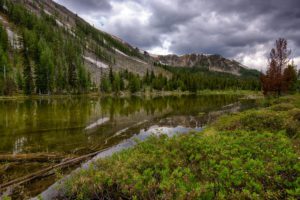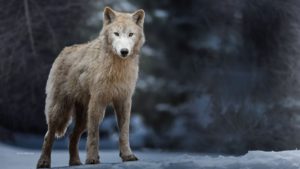Contact:
Katie Fite, Western Watersheds Project, (208) 871-5738
Todd Tucci, Advocates for the West, (208) 342-7024
Duane Short, Biodiversity Conservation Alliance, (307) 742-7978 or (270) 366-3415
Josh Pollock, Center for Native Ecosystems, (303) 546-0214
Bill Marlett, Oregon Natural Desert Association, (541) 330-2638
Mark Salvo, Sagebrush Sea Campaign, (503) 757-4221
 BOISE, ID Wednesday September 26 Federal District Judge Edward Lodge of the District of Idaho struck down a decision from the U.S. Fish and Wildlife Service that the agency lacked sufficient scientific information to warrant Endangered Species Act listing consideration. The judge ordered the Fish and Wildlife Service to reconsider this small sagebrush mammal for listing and to issue a new 90-day finding.
BOISE, ID Wednesday September 26 Federal District Judge Edward Lodge of the District of Idaho struck down a decision from the U.S. Fish and Wildlife Service that the agency lacked sufficient scientific information to warrant Endangered Species Act listing consideration. The judge ordered the Fish and Wildlife Service to reconsider this small sagebrush mammal for listing and to issue a new 90-day finding.
“Under this decision, the FWS can no longer ignore the plummeting pygmy rabbit populations”, said Todd Tucci, attorney with Advocates for the West. “The Service must put politics aside, and let science dictate the outcome of its review.”
The pygmy rabbit weighs about a pound and a half and can fit in the palm of a hand. This unique rabbit climbs high into the branches of sagebrush to browse on the leaves, making it the only arboreal rabbit in North America. Pygmy rabbits require areas of tall, old sagebrush, typically found in valley bottoms.
“The BLM in 2007 is still relentlessly mowing, chopping, burning and herbiciding pygmy rabbit habitats,” said Katie Fite of Western Watersheds Project. “Remnant thick and old growth sagebrush is being destroyed in BLM and Forest Service projects dubbed hazardous fuels reduction’ or wildlife habitat projects. In reality, these are the same as the old livestock forage projects that have already obliterated so much of the Sagebrush Sea.”
“Sagebrush dependent wildlife, from pygmy rabbits to sage grouse, are under siege from the dual forces of livestock grazing and cheatgrass-driven fires, turning thousands of acres of the West into a barren moonscape,” said Bill Marlett, Executive Director of the Oregon Natural Desert Association.
The welfare of the pygmy rabbit has also become a major issue in massive oil and gas development projects such as Wyoming’s Jonah Field and Atlantic Rim. “Pygmy rabbits are especially vulnerable to habitat fragmentation from the building of road networks, because these animals are too shy to venture out from the cover of sagebrush to cross a road,” said Duane Short of Biodiversity Conservation Alliance. “For this reason, the huge level of oil and gas development targeting sagebrush basins in Wyoming is a major threat to the pygmy rabbit.”
“The pygmy rabbit’s habitat is more threatened than ever before by so-called ‘off-site mitigation’ projects conducted by oil and gas companies,” added Josh Pollock of Center for Native Ecosystems. “We simply cannot afford to lose any more of our Sagebrush Sea environment, especially the stands of tall, mature sagebrush which serve so many wildlife species.”
Groups bringing the suit included Western Watersheds Project, Biodiversity Conservation Alliance, Center for Native Ecosystems, Oregon Natural Deserts Association, and the Sagebrush Sea Project. Todd Tucci of the Advocates for the West Boise Office represented the plaintiff groups in the case.
“The pygmy rabbit is one of a suite of sagebrush obligate species that deserve federal protection,” said Mark Salvo of the Sagebrush Sea Campaign. “The sage-grouse, white-tailed prairie dog, slickspot peppergrass, Wyoming pocket gopher, and mountain quail are also destined for listing.”
“As the pygmy rabbit loses more and more of its sagebrush habitat, the need for the safety net that only the Endangered Species Act can provide becomes all the greater,” added Pollock.






